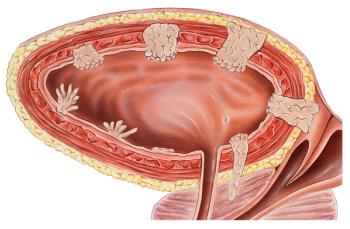
Breast Cancer Incidence Rates Increase for Racial/Ethnic and Age Groups Between 2010 to 2016
A recent examination of breast cancer subtypes, specifically luminal A and luminal B breast cancer, found that incidence rates from 2010-2016 increased for a number of racial/ethnic and age groups.
A study published in JAMA Network Open found that luminal A and luminal B breast cancer incidence rates increased for a number of racial/ethnic and age groups between 2010 and 2016, with the largest increase found in luminal B breast cancer.
Specifically, the incidence rates for ERBB2-enriched breast cancer increased for young non-Hispanic white women, while the incidence rates for triple-negative breast cancer for both midlife non-Hispanic White and non-Hispanic Black women.
“This cross-sectional study found that between 2010 and 2016, hormone receptor–positive breast cancer subtypes increased for many racial/ethnic and age groups, with the largest and most consistent increases observed for luminal B breast cancer in non-Hispanic White and Hispanic women,” wrote the researchers.
Focusing on luminal A breast cancer, the incidence rates increased in non-Hispanic White (APC from 2010-2014, 2.3%; 95% CI, 0.3% to 4.2%) and non-Hispanic Asian/Pacific Islander (APC from 2010-2016, 2.5%; 95% CI, 0.6% to 4.5%) women aged 40 to 54 years, as well as in in non-Hispanic Black women aged 55 to 69 years women (APC from 2010-2012, 4.9%; 95% CI, 4.0% to 5.7%).
For luminal B breast cancer, the incidence rates increased in all age groups for non-Hispanic white women (age 25-39 years: APC, 4.3%; 95% CI, 1.5% to 7.%2; age 40-54 years: APC, 3.5%; 95% CI, 1.4% to 5.6%; age 55-69 years: APC, 3.3%; 95% CI, 1.6% to 5.0%; age 70-84 years: APC, 3.9%; 95% CI, 1.9% to 6.0%) and for Hispanic women (age 25-39 years: APC, 8.4%; 95% CI, 5.8% to 11.2%; age 40-54 years: APC, 6.1%; 95% CI, 4.2% to 8.0%; age 55-69 years: APC, 5.1%; 95% CI, 1.5% to 8.8%; age 70-84 years: APC, 7.1%; 95% CI, 4.6% to 9.6%).
More, the incidence rate for ERBB2-enriched breast cancer increased in non-Hispanic White women aged 25 to 39 years (APC, 4.7%; 95% CI, 1.5% to 8.0%). As for triple-negative breast cancer, incidence rates decreased in non-Hispanic White women aged 40 to 54 years (APC, –2.3%; 95% CI, –3.8% to –0.7%) and 55 to 69 years (APC, –3.6%; 95% CI, –5.1% to –2.1%), as well as in non-Hispanic Black women aged 55 to 69 years (APC, –1.4%; 95% CI, –2.2% to –0.7%).
“The findings of this cross-sectional study suggest that overall breast cancer trends mask differences that may exist across molecular subtypes by age and racial/ethnic groups,” wrote the researchers. “In recent years, luminal A and luminal B breast cancer incidence has increased, whereas triple-negative breast cancer trends have gradually declined for certain age and racial/ethnic groups.”
There was a total of 320,124 women diagnosed with breast cancer from 2010 to 2016. Of that total, 232,558 (72.6%) had luminal A, 35,869 (11.2%) had luminal B, 15,472 (4.8%) had ERBB2-enriched, and 36,225 (11.3%) had triple-negative breast cancer subtypes.
The large population with a wide range of age groups examined by researchers was seen as a strength of the study. More, the study included “detailed and consistent assessment and reporting of data” in regard to the different molecular subtypes of breast cancer for the time period (2010-2016).
As for limitations of the study, the limited data for ERBB2 status, of which registries began collecting data in 2010, forced the researchers to examine a smaller time period for their research. This short period of time did not allow for longer-term changes in the incidence rates to be found.
“Our results highlight the heterogeneity of these trends and underscore the importance of surveillance of breast cancer trends by clinically relevant subgroups to guide breast cancer prevention and control efforts,” wrote the researchers.
Reference:
Acheampong T, Kehm RD, Terry MB, et al. Incidence Trends of Breast Cancer Molecular Subtypes by Age and Race/Ethnicity in the US From 2010 to 2016. JAMA Network Open. doi:10.1001/jamanetworkopen.2020.13226.
Newsletter
Stay up to date on recent advances in the multidisciplinary approach to cancer.


























































































